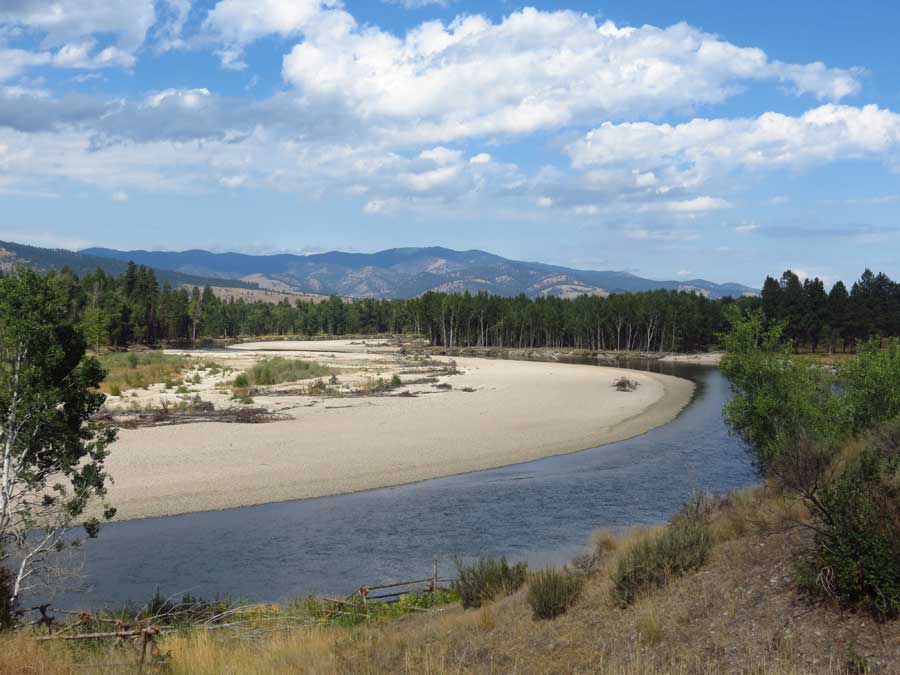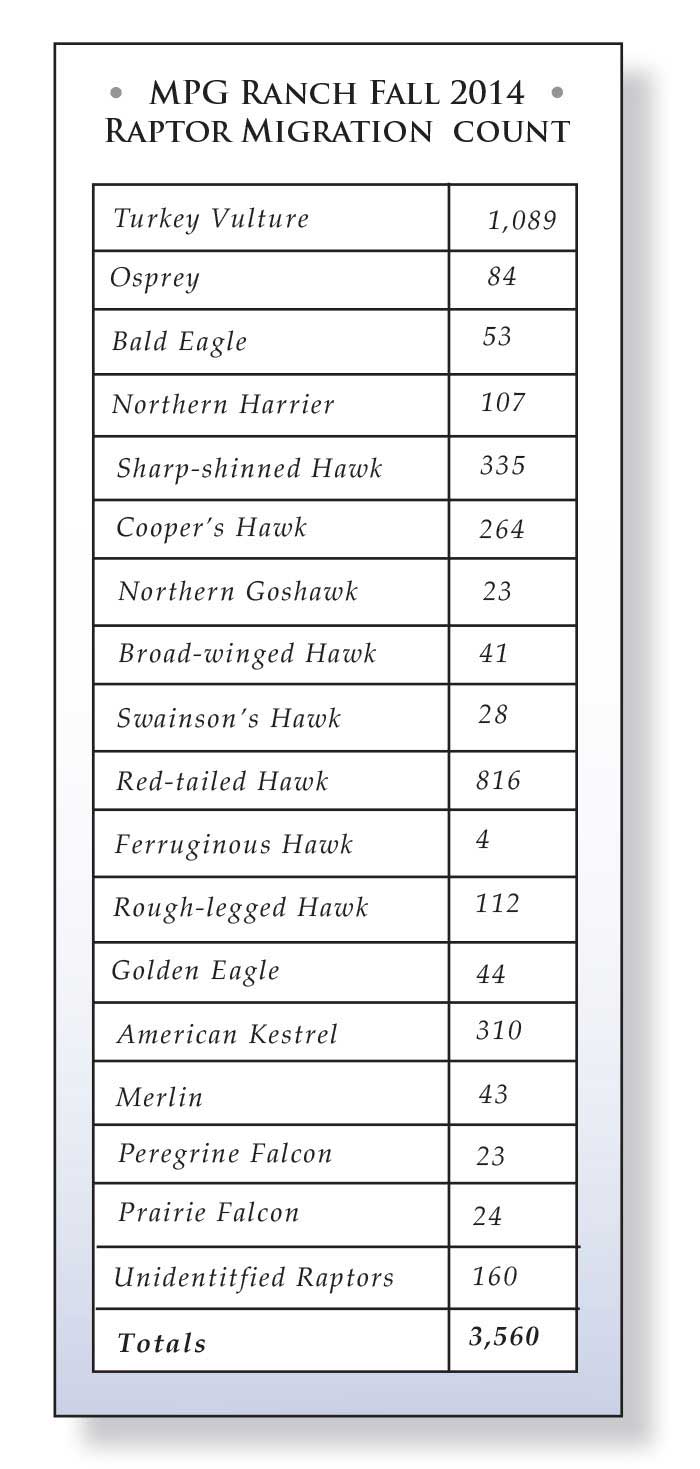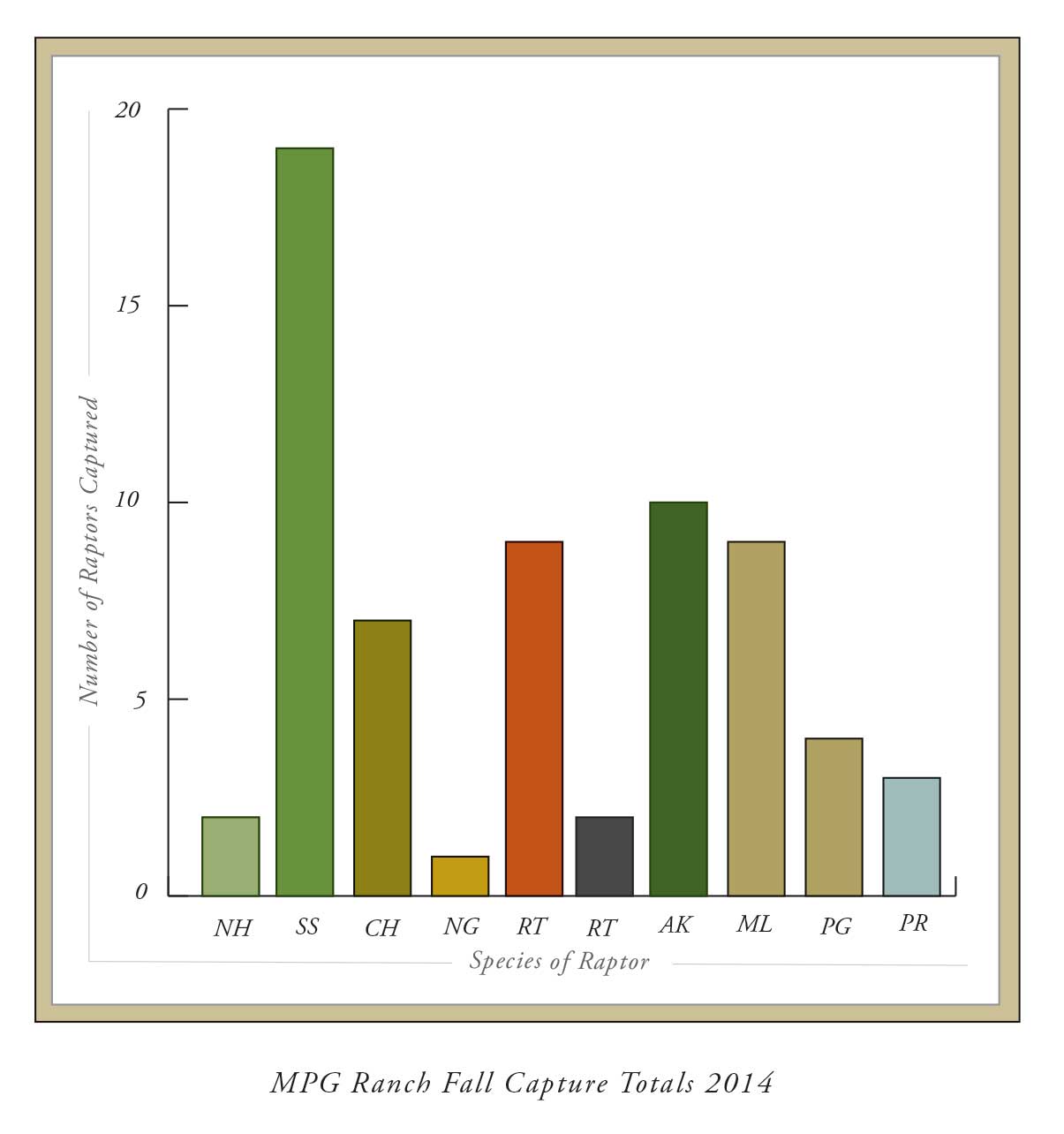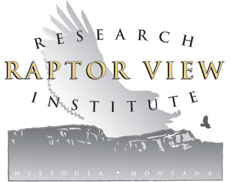 In 2011 we partnered with the MPG Ranch, located in Lolo, Montana, to conduct a variety of conservation based raptor research projects. This roughly 8500 acre ranch is an incredible piece of property located in the north end of the Bitterroot Valley. It is an obvious migration corridor for raptors passing over west-central Montana. Habitat on the ranch ranges from riverbottom forest, open grassland, sage and bitterbrush shrublands, and conifer forest. The property was managed as a cattle ranch for over a hundred years, and consequently, ecosystem functioning is limited in some areas. The MPG ranch owners and staff are working diligently, using the best available science, to restore the ranch to historic ecological conditions.
In 2011 we partnered with the MPG Ranch, located in Lolo, Montana, to conduct a variety of conservation based raptor research projects. This roughly 8500 acre ranch is an incredible piece of property located in the north end of the Bitterroot Valley. It is an obvious migration corridor for raptors passing over west-central Montana. Habitat on the ranch ranges from riverbottom forest, open grassland, sage and bitterbrush shrublands, and conifer forest. The property was managed as a cattle ranch for over a hundred years, and consequently, ecosystem functioning is limited in some areas. The MPG ranch owners and staff are working diligently, using the best available science, to restore the ranch to historic ecological conditions.
As indicators species, raptors can serve as “barometers” of ecosystem health. By closely monitoring and researching raptor populations on the MPG Ranch, we can gauge the effects of restorative efforts. Projects we are working on include: fall and spring raptor migration monitoring, eagle toxicology, resident raptor color banding and
Golden Eagle satellite tracking.
Raptor Counts:  The MPG Ranch has the distinction of being one of the only known locations in the West where raptor migration monitoring can be conducted in both the spring and fall. The overall numbers and the species diversity are very impressive for the intermountain region of the Rocky Mountains.
The MPG Ranch has the distinction of being one of the only known locations in the West where raptor migration monitoring can be conducted in both the spring and fall. The overall numbers and the species diversity are very impressive for the intermountain region of the Rocky Mountains.
Eagle toxicology study:
Since 2011 we have tested over 50 eagles captured on the MPG Ranch for blood-lead content. Unfortunately, all but four tested higher than what we would expect from background levels alone. Because lead is ab- sorbed into the body from the blood within 2-3 weeks after exposure, our results suggest that Golden Eagles are ingesting lead while in the Bitterroot Valley.
Golden Eagle Satellite Tracking:
This winter we deployed seven GPS transmitters on Golden Eagles captured on the MPG Ranch, bringing the total number since 2011 up to 14. During the past two springs, we watched the eagles travel north to Canada and Alas- ka, as far north as the Brooks Range above the Arctic Circle! In fall, each bird returned to Montana, showing a high degree of fidelity to the Bitterroot Valley. We look forward to following the birds from this winter. Hopefully, one or two stay and breed in Montana--it would be great to visit them this summer and document their breeding activity!
Osprey Satellite Tracking
This year we set out to track individuals from two nests on the MPG Ranch as well as a third nest located nearby. As the adults from the Ranch Entrance and North Center Pivot nests on the MPG Ranch initiated laid eggs, the Bitterroot River, and other waterways in western Montana, began to swell with spring runoff. Water levels stayed high for an unusually long period, making it difficult for Ospreys to forage. As a result, both nests failed, as did many other Osprey nests in the region. The third nest, located on the Sapphire Ranch, was initiated much later than the North Center Pivot and Ranch Entrance nests. By the time their lone nestling hatched in July, peak runoff flows had subsided, which gave them a much better chance of successfully raising their chick. On August 13, we accessed the nest and outfitted the nestling with a GPS transmitter. This marked the second straight year where just one nestling was produced from the nests near the MPG Ranch. Currently, the young bird is on its wintering grounds in Mexico, where we expect it to stay until the spring of 2016.
Banding Summary, Fall 2013 In addition to counting, we conducted our third full season, fall migration banding effort this year. We banded from Sep- tember 7th through October 30th, capturing a total of 66 individuals of 10 different species, including 26 falcons!
In addition to counting, we conducted our third full season, fall migration banding effort this year. We banded from Sep- tember 7th through October 30th, capturing a total of 66 individuals of 10 different species, including 26 falcons!
Resident Raptor Banding:
In conjunction with MPG staff biologists we have been monitoring all known nesting raptors on the MPG Ranch includ- ing Golden Eagles, Bald Eagles, Osprey, Northern Harriers, Red-tailed Hawks, Cooper’s Hawks, and American Kestrels. Additionally, we have marked over 200 raptors with unique combinations of colored bands so they can be identified at a distance. Re-sightings of color-marked individuals help us assess survivorship and fidelity to breeding areas and mates. The high number of American Kestrels on the ranch (42 territories monitored in 2014) has earned them special attention. Since 2011, we have captured over 150 American Kestrels on the MPG Ranch; over 30% of adults have been re-sighted in subsequent breeding seasons!











